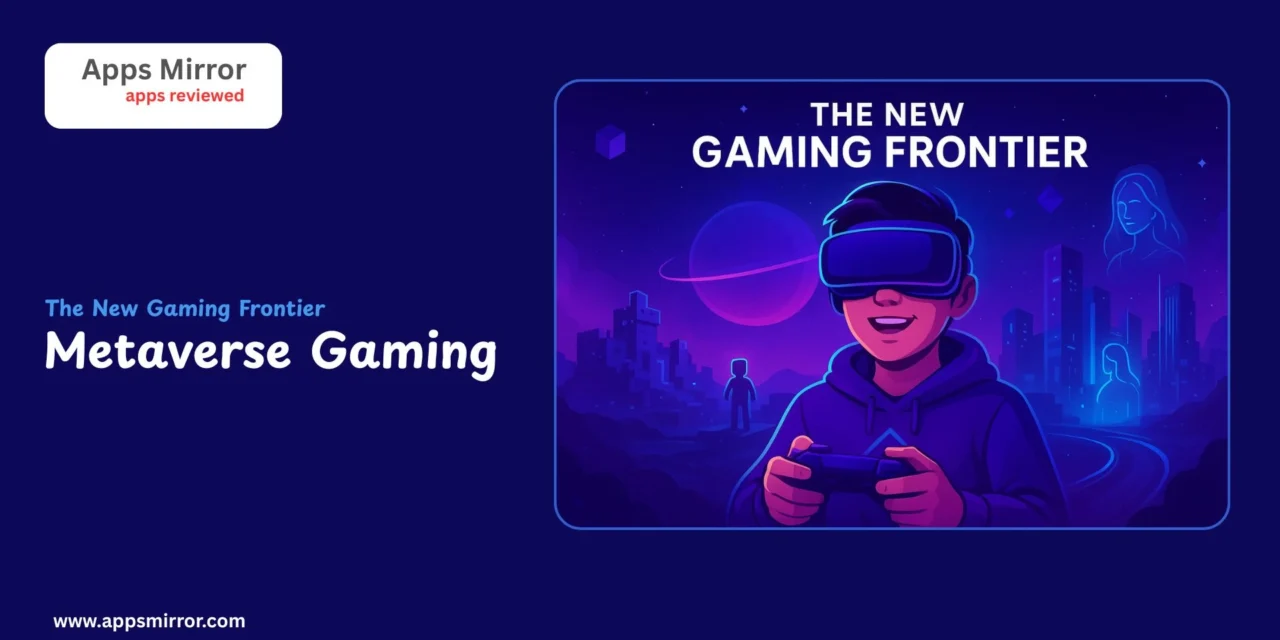The New Gaming Frontier
Gaming has always been about escape—moving from everyday life into a world of action, imagination, and thrill. But with the metaverse, that escape becomes more than just pixels on a flat screen. It evolves into fully immersive universes where players live alternate digital lives, own virtual property, and even earn real-world money through play.
The concept of the metaverse may sound futuristic, but gaming is already its most active testbed. Popular titles like Fortnite, Roblox, and Minecraft have started blurring the line between games and social hubs, where people not only play but also attend concerts, design worlds, and interact with millions of others in real time.
From Consoles to Universes
In the past, a game was something you played on a console, PC, or phone. You completed missions, unlocked achievements, and maybe connected with friends online.
The metaverse shifts this model by turning games into persistent universes that never pause—even when you log off.
Imagine this:
-
You design a digital home
-
Buy a virtual outfit for your avatar
-
Attend a virtual party with friends across the globe
-
Jump back into an adventure quest
—all within the same interconnected space. Gaming is no longer just a pastime; it becomes part of a continuous digital lifestyle.
Who’s Driving the Change
The key players in metaverse gaming are a mix of established giants and ambitious startups:
-
Epic Games – transforming Fortnite into a social metaverse, not just a battle royale.
-
Roblox – a platform where users create and monetize their own worlds.
-
Meta (Facebook) – building VR-based environments blending gaming with social networking.
-
Microsoft & Nvidia – powering the infrastructure through cloud gaming and digital ecosystems.
These companies are competing not just for gamers, but for our digital time, aiming to make the metaverse a default part of everyday interaction.
The Bright Side of Metaverse Gaming
The potential benefits are exciting:
✅ Creative Freedom – Players design digital items, buildings, and landscapes.
✅ Economic Opportunities – “Play-to-earn” lets gamers make real money via NFTs, digital goods, and blockchain games.
✅ Global Community – Friends connect across continents, making gaming about shared experiences.
✅ Cultural Fusion – Music, sports, and films merge with gaming (virtual concerts & movie screenings already exist).
The Dark Side We Cannot Ignore
But this revolution isn’t without challenges:
⚠️ Addiction Risks – Endless universes with no pause button can make it hard to disconnect.
⚠️ Economic Inequality – Blockchain games may favor wealthier players.
⚠️ Safety Concerns – Data privacy and child protection remain critical.
⚠️ Mental Health Impact – Excessive virtual living can affect real-world relationships.
Developers must balance freedom with healthy play, safety, and community well-being.
What the Future Holds
In the next decade, expect gaming to extend into education, work, and collaboration:
Virtual classrooms inside Roblox
Team-building quests inside Fortnite-like worlds
Hybrid gaming-work models replacing traditional meetings
With lighter VR headsets, mainstream AR glasses, and better cloud gaming, we may see a unified metaverse where multiple platforms merge into one interconnected ecosystem.
Technology for Good
Despite the risks, the metaverse has the potential to democratize creativity and bring people closer together.
If developed responsibly, metaverse gaming can:
-
Enable education
-
Foster cultural exchange
-
Boost economic opportunities
For Gen-Z and beyond, it’s more than entertainment—it’s a tool for connection, creativity, and growth.





